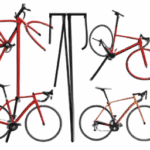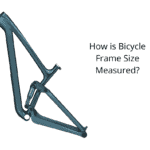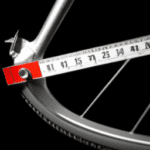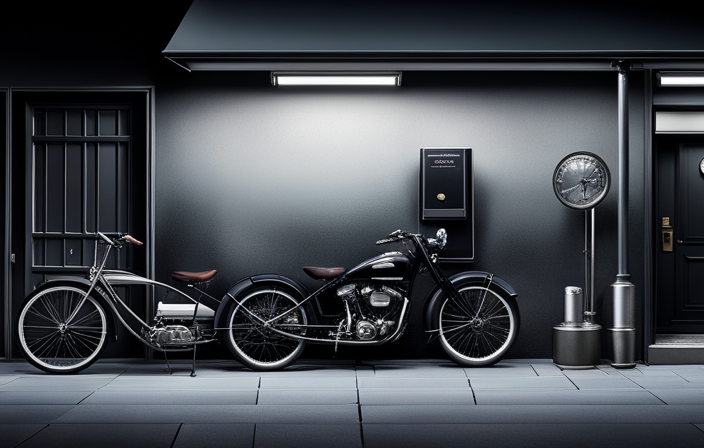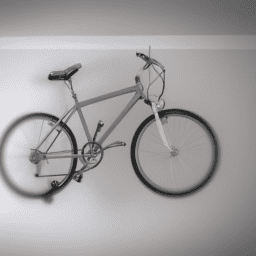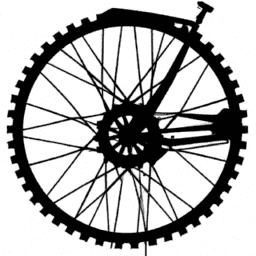As someone passionate about professional cycling, I frequently encounter inquiries related to different parts of a bicycle. A common question that comes up is regarding the size of a bicycle’s frame.
The frame size of a bicycle refers to the length of the seat tube, which is the part of the frame that holds the seat post and saddle. The frame size is crucial because it determines the height and reach of the bicycle, which ultimately affects the rider’s comfort and efficiency.
A frame that is too small or too large can cause discomfort, pain, and even injury to the rider. Therefore, it is essential to choose the right frame size for your body type and riding style.
In this article, I will provide a detailed explanation of what frame size is, how to measure it, factors that affect it, how to choose the right size, and maintaining your bike’s frame.
In the following sections, I will provide detailed information on how to measure frame size, factors that affect it, and how to choose the right size for your bike.
Key Takeaways
- Frame size is determined by body proportionality and affects comfort and efficiency.
- Accurate measurements of the body and comparison to the manufacturer’s size chart are necessary to determine frame size.
- Saddle height and handlebar reach are important factors to consider when choosing the right frame size.
- Regular maintenance, cleaning, and inspection of the frame are crucial for optimal performance and preventing damage or wear and tear.
Understanding the Importance of Frame Size
You’ll want to make sure the frame size of your bike fits you properly to avoid discomfort and improve your performance. The right frame size is essential for comfortable and efficient cycling.
Body proportionality is one of the key factors in determining the ideal frame size. A bike that is too small or large for your body can cause discomfort, muscle strain, and even injury. Customization options, such as adjustable seat heights and handlebar positions, can help fine-tune the fit of your bike, but the frame size remains the foundation of a comfortable and efficient ride.
To measure your frame size, you’ll need to take accurate measurements of your body and compare them to the manufacturer’s size chart. The most important measurement is your inseam, as it determines the height of the frame you need.
Other measurements, such as your torso and arm length, may also be relevant depending on your riding style and preferences. By taking the time to find the right frame size, you’ll be able to ride longer, faster, and with less discomfort.
How to Measure Frame Size
To determine the dimensions of your ride, take note of the distance between the ground and the top of the seat post. This measurement is known as the stand-over height. It’s important to measure this accurately, as it will affect your comfort and safety while riding.
Here are some tips on measuring your bike’s frame size with accuracy:
- Use a measuring tape to take the stand-over height measurement
- Always measure from the ground to the top of the seat post, not the saddle
- Make sure the bike is on level ground before measuring
- Double-check your measurement to avoid common mistakes
Measuring your bike’s frame size accurately is crucial in ensuring a comfortable and safe ride. However, there are other factors that affect frame size, such as the length of the top tube and the angle of the seat tube. In the next section, we’ll delve into these factors and how they impact your riding experience.
Factors That Affect Frame Size
When choosing the perfect bicycle for you, it’s important to consider various factors that can affect the frame size. One crucial factor is the adjustability of the frame size. Some bikes have fixed sizes, which may not be suitable for riders who fall in between standard sizes. However, many bikes come with adjustable frames that allow you to customize the size to your specific needs. This is especially important for riders who may have longer or shorter torsos or legs than average.
Another factor that can affect frame size is the availability of custom frame options. Custom frames are designed and built specifically for the individual rider based on their body measurements and riding style. This allows for a more precise fit and can greatly enhance comfort and performance. However, custom frames can be more expensive and may require a longer lead time for production. Ultimately, the goal is to find a frame size that maximizes your comfort and performance while still staying within your budget.
When choosing the right frame size, it’s important to consider all the factors that can affect your riding experience. By understanding the impact of factors such as adjustability and custom frame options, you can make an informed decision that will allow you to fully enjoy your cycling adventures.
Choosing the Right Frame Size
If you’re looking for a comfortable and efficient ride, it’s important to choose a frame that fits your body perfectly. To determine the right size, you’ll need to consider two key factors: saddle height and handlebar reach.
Saddle height is the distance between the top of the saddle and the center of the bottom bracket. This measurement can be adjusted by raising or lowering the saddle post. To find the right height, sit on the saddle with your feet on the pedals and the pedals at the bottom of their rotation. You should be able to reach the ground with your toes and have a slight bend in your knee when the pedal is at its lowest point.
Handlebar reach, on the other hand, is the distance between the saddle and the handlebars. This measurement can be adjusted by changing the stem length. To find the right reach, sit on the saddle and reach forward with your hands. You should be able to comfortably grip the handlebars without feeling stretched or cramped.
Now that you know how to choose the right frame size, it’s important to maintain it properly to ensure longevity.
Maintaining Your Bike’s Frame
Keeping your bike in top condition is crucial for a smooth and enjoyable ride experience. One of the most important aspects of maintaining your bike is taking care of its frame. The frame is the backbone of your bike, and it is what holds all of the other components together. Without a strong and sturdy frame, your bike will not be able to perform at its best. In this section, we will discuss some cleaning techniques and rust prevention methods that you can use to keep your bike’s frame in good condition.
When it comes to cleaning your bike’s frame, it is important to use the right tools and techniques. Avoid using abrasive cleaners or scrub brushes, as these can damage the paint or finish on your frame. Instead, use a soft sponge or cloth with a mild soap solution to gently clean the frame. You can also use a bike-specific cleaner, which is designed to remove dirt and grime without harming the frame. After cleaning, be sure to dry the frame thoroughly to prevent rust from forming. Speaking of rust prevention, one of the best ways to keep your bike’s frame rust-free is to store it in a dry place. If you live in a humid or rainy climate, consider using a bike cover or storing your bike indoors to protect it from the elements. Additionally, you can apply a rust inhibitor or a protective wax to the frame to help keep it in good condition. By following these maintenance tips, you can ensure that your bike’s frame remains strong and reliable for years to come.
| Cleaning Techniques | Rust Prevention | ||
|---|---|---|---|
| Use a soft sponge or cloth with a mild soap solution | Store your bike in a dry place | ||
| Use a bike-specific cleaner | Use a protective wax or rust inhibitor | ||
| Dry the frame thoroughly after cleaning | Consider using a bike cover | ||
| Avoid using abrasive cleaners or scrub brushes | |||
| Regularly inspect your bike for any signs of damage or wear and tear. |
Frequently Asked Questions
What is the average weight of a bicycle frame?
As an expert in the field, I can tell you that the average weight of a bicycle frame varies depending on the material. Carbon frames are typically the lightest, followed by titanium, aluminum, and steel frames.
Can a bicycle frame be custom-made to fit my body type?
Yes, a custom frame can be made to fit your body type by custom framebuilders. The benefits of a custom frame include improved comfort, efficiency, and performance. The process involves measurements, design, and construction using specialized materials.
What materials are commonly used to make bicycle frames?
Riding a bike is like a dance with the frame as your partner. Aluminum and carbon fiber are lightweight and stiff, while steel is durable and comfortable. Each has advantages and disadvantages in terms of cost, weight, and performance.
What is the difference between a men’s and women’s frame size?
As a knowledgeable cyclist, I can tell you that men’s and women’s bicycle frames differ in saddle height and handlebar reach. These adjustments ensure a comfortable, efficient riding position based on gender-specific anatomical differences.
How often should I replace my bicycle frame?
Based on factors affecting bicycle frame durability, such as materials and usage, frames can last anywhere from 5-10 years. Signs of wear and tear on bicycle frames include cracks, dents, and rust. Regular maintenance can prolong the frame’s lifespan.
Conclusion
After reading this article, I hope you now have a better understanding of the importance of frame size when it comes to bicycles. It’s crucial to choose the right frame size to ensure that your bike is comfortable to ride and safe to use.
Measuring your frame size correctly and taking factors such as your height and riding style into consideration can help you make an informed decision. Remember to maintain your bike’s frame regularly to ensure that it stays in top condition.
A well-maintained frame can last for years and provide you with countless hours of enjoyable rides. So, if you’re looking to purchase a bike or simply want to ensure that your current bike is the right size, take the time to measure and consider all the factors.
Trust me, your body will thank you for it in the long run.



